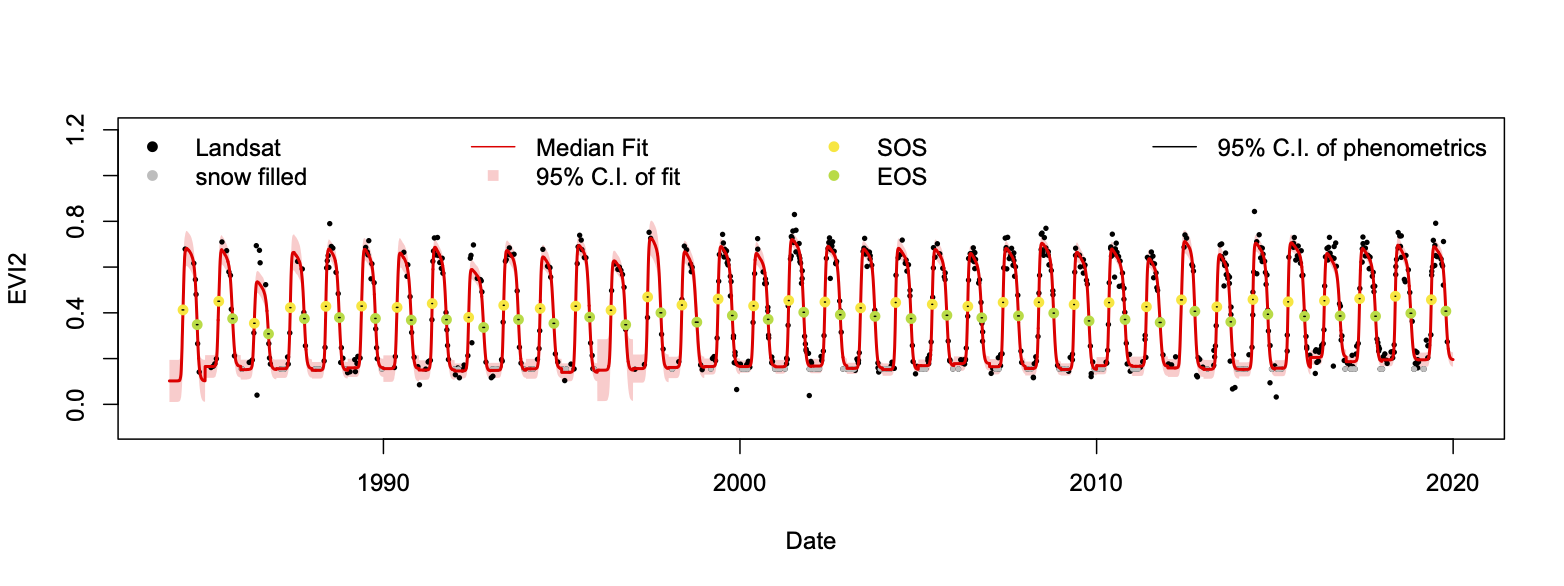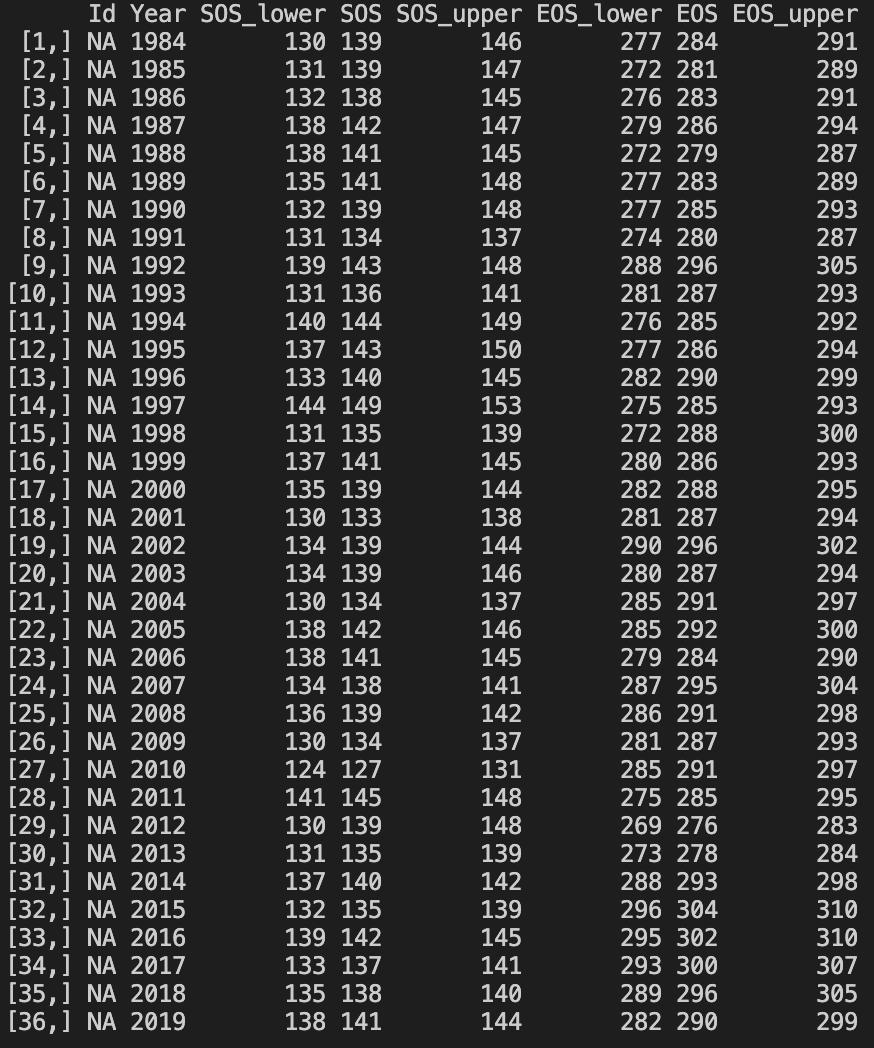A Bayesian hierarchical model that quantifies long-term annual land surface phenology from temporally sparse 30 m Landsat time series (well, it doesn't have to be Landsat).
More details about the model please read the paper: Long-term, medium spatial resolution annual land surface phenology with a Bayesian hierarchical model
And the citation to this work is:
Gao, X., Gray, J. M., & Reich, B. J. (2021). Long-term, medium spatial resolution annual land surface phenology with a Bayesian hierarchical model. Remote Sensing of Environment, 261, 112484. https://doi.org/10.1016/j.rse.2021.112484
We are currently (11/12/2021) improving the computing speed of the BLSP algorithm, thanks to Matt Shisler and Dr. Brian Reich's help. Be sure to watch or star this repo to keep up with our updates.
The scripts are written in R programming language and use JAGS software to conduct the MCMC sampling for the Bayesian model. To run the scripts, users should install R along with some packages and JAGS.
We use R v3.6.2. Although it should not be limited to this R version, but all of the scripts were tested under v3.6.2. Required R packages are:
- data.table (most of the data in the scripts are processed by functions of data.table. Well, I like data.table!)
- rjags (for communicating with JAGS software)
- minpack.lm (it provides functions for non-linear least square fit)
- RColorBrewer (for plotting the result)
- viridis (for plotting the result)
- lubridate (for easy parsing date strings)
See the website: http://mcmc-jags.sourceforge.net/
We use JAGS v4.3.0. Again, it should not be limited to this JAGS version, but all of the scripts were tested under v4.3.0. Users can download and install JAGS from this webpage. To use our scripts, there's no need to know how to use JAGS, actually after installation, users don't even need to open JAGS, we'll use R code to communitate with it.
There are 3 files in the respository's Code folder:
- base.R
- Bayesian_LSP_fit.R
- test_ts.Rds
base.R contains the needed libraries and pre-defined functions, it'll be sourced in Bayesian_LSP_fit.R, which runs the model.
test_ts.Rds is a cached R dataset file. It contains a Landsat EVI2 time series with columns including date and EVI2 value. Users can use the test data to quickly run the Bayesian model.
Bayesian_LSP_fit.R is easy to understand and run. The only thing need to do before running the script is changing the working directory specified in setwd() function, make sure the script can find the base.R file and test_ts.Rds file. After running the script, there will be a plot showing the result of LSP fit and a table that contains all retreived phenometrics.
Detail information about the model can be found in the paper.
Program result - Model fit:
Program result - Retrieved phenos:

